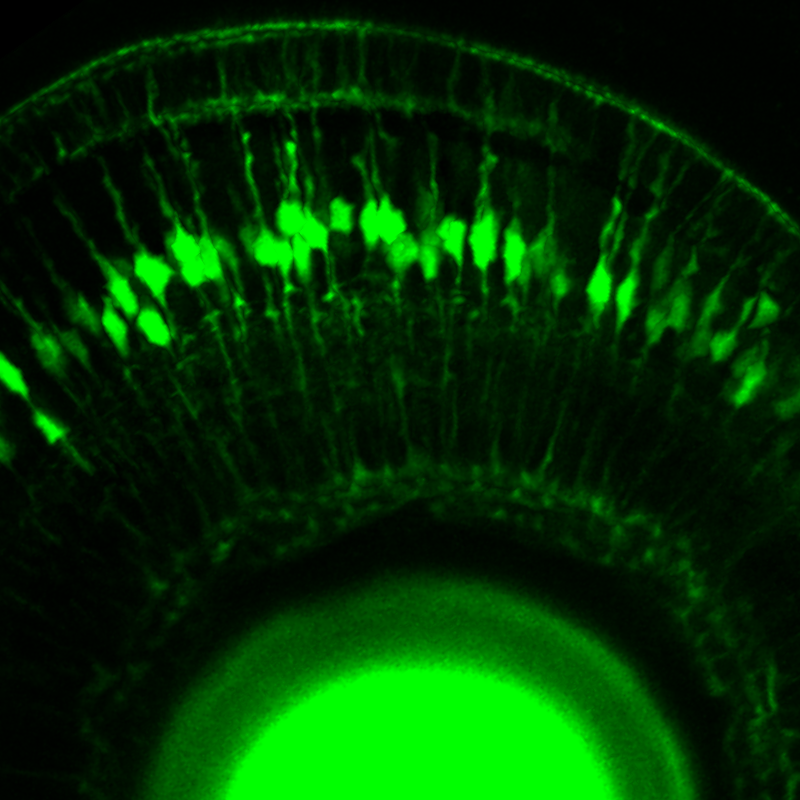Research Overview
The Mumm lab seeks to investigate the development, function, and regeneration of disease-relevant neurons and neural circuits responsible for vision. Our long-term goal is to apply what we learn from a naturally regenerative species, the zebrafish, toward the development of novel therapies for restoring visual function to patients.
We place an emphasis on unique perspectives zebrafish afford to biological studies, such as in vivo time-lapse imaging of cellular behaviors and cell-cell interactions, and high-throughput chemical and genetic screening. We have pioneered several technologies to support this work including multicolor imaging of neural circuit formation, a selective cell ablation methodology, and a quantitative high-throughput phenotypic screening platform. Together, these approaches are providing novel insights into how the degeneration and regeneration of discrete retinal cell types is controlled.
Using our targeted cell ablation system, we and other have revealed that selective retinal cell loss elicits a novel “fate-biased” regenerative response, where stem cell derived neural progenitors preferentially give rise to the lost cell type. This differs fundamentally from more common large-scale injury paradigms which induce a “developmental” regenerative response that produced all retinal cell types. In additions, we pioneered a functional analysis of the role of the innate immune system in retinal regeneration. This work has implicated retinal microglia as biphasic mediators of neuroimmune interactions that are required for retinal stem cell activation and which control the kinetics of retinal cell regeneration. This and additional focus areas are outlined below.




